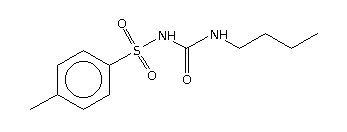MIAMI BEACH -- Only a negligible amount of glyburide was found in the breast milk of six women who were taking the drug to treat type 2 diabetes, Dr. Denice Feig reported.
Investigators analyzed the breast milk of the women, who had taken a single 5-mg dose of the oral hypoglycemic. They determined that the extent of transfer was below the level of detection, she said in a poster presentation at the annual meeting of the American Society for Clinical Pharmacology and Therapeutics.
The usual glyburide dose is 5 mg twice daily. Some patients take less, and some take up to 10 mg twice daily, said Dr. Feig, head of the Diabetes and Endocrinology in Pregnancy Program at Mount Sinai/University Health Network in Toronto.
At present, women are advised not to breast-feed while on oral hypoglycemics, but that recommendation reflects a lack of evidence-based data regarding the extent of transfer of these drugs into breast milk.
"There are not a lot of data out there. The recommendation is based largely on an old study using tolbutamide--an old sulfonylurea--that showed crossing into breast milk. We also know that the old sulfonylureas crossed the placenta," Dr. Feig said. "Ours is the first study [of breast milk] looking at glyburide, which has also been shown not to cross the placenta."
To determine the extent of glyburide transfer. Dr. Feig and her associates measured the drug concentrations in the plasma and breast milk of the six participants using high-performance liquid chromatography with fluorescence detection.
When normalized to the subjects' body weights, the median dose of glyburide was 0.06 mg/kg per day. Over an 8-hour period, there was no detectable glyburide (above the 5-ng/mL limit of detection) in any of the milk samples. In contrast, plasma concentrations were within the normal range for patients taking 5 mg/day of the drug, she said.
"The maximal relative infant exposure is negligible for breast-feeding." Dr. Feig said. "Nevertheless, it is still prudent to follow the baby for potential signs of hypoglycemia."
In this study, "we did not let our patients breast-feed for 12 hours after the dose was given, so we did not expect to find signs in the infants," Dr. Feig said. "We did have a mother who took glyburide 5 mg twice daily continuously who did not report any ill effects in the baby."
Another diabetes drug, metformin, has been shown to cross the placenta, but recent studies suggest it does not cross into breast milk to any great extent, she noted. "I believe that based on these newer studies, the recommendations for breast-feeding will eventually change."
Dr. Feig's study was supported by an educational grant from Aventis Pharma Inc.
COPYRIGHT 2004 International Medical News Group
COPYRIGHT 2004 Gale Group


